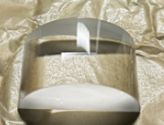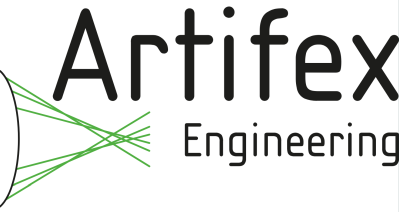cylindrical lenses (original) (raw)
Definition: lenses which focus or defocus light only in one direction
Alternative term: cylinder lenses
- lenses
- achromatic lenses
- aspheric aspheric
- ball lenses
- condensers
- cylindrical lenses
- diffractive lenses
- f–theta lenses
- fiber lenses
- field lenses
- Fresnel lenses
- gradient-index lenses
- Kerr lens
- loupes
- magnifying glasses
- microlens arrays
- microlenses
- objective lenses
- ocular lenses
- rod lenses
- scanning lenses
- telecentric lenses
- zoom lenses
- (more topics)
Related: lensesastigmatism
Page views in 12 months: 1092
DOI: 10.61835/fyl Cite the article: BibTex BibLaTex plain textHTML Link to this page! LinkedIn
Content quality and neutrality are maintained according to our editorial policy.
📦 For purchasing cylindrical lenses, use the RP Photonics Buyer's Guide — an expert-curated directory for finding all relevant suppliers, which also offers advanced purchasing assistance.
Contents
What are Cylindrical Lenses?
Cylindrical lenses (also called cylinder lenses) are optical lenses which are curved only in one direction. Therefore, they focus or defocus light only in one direction, for example in the horizontal direction but not in the vertical direction. As for ordinary lenses, their focusing or defocusing behavior can be characterized by a focal length or its inverse, the dioptric power.
Usually, the surface curvature of a cylindrical lens is of spherical type, but there are also aspheric cylindrical lenses. Further, there are cylindrical gradient-index lenses, not exhibiting any surface curvature.
Applications
Cylindrical lenses can be used to obtain a beam focus of elliptical form. That can be required, for example, for feeding light through the entrance slit of a monochromator or into an acousto-optic deflector, or for conditioning pump light for a slab laser.
There are fast axis collimators for diode bars, which are essentially cylindrical lenses — often with an aspheric shape.
Cylindrical lenses cause astigmatism of a laser beam: a mismatch of focus position for both directions. Conversely, they can also be used for compensating astigmatism of a beam or an optical system. For example, they may be required for collimating the output of a laser diode such that one obtains a circular non-astigmatic beam.
Frequently Asked Questions
What is a cylindrical lens?
A cylindrical lens is an optical lens that is curved in only one direction. As a result, it focuses or defocuses light only along a single axis, unlike a standard spherical lens.
What are the main applications of cylindrical lenses?
They are used to create an elliptical beam focus, for example, for feeding light into a monochromator slit or pumping a slab laser. They are also essential for correcting astigmatism, particularly for collimating the output of laser diodes.
How do cylindrical lenses relate to astigmatism?
Cylindrical lenses inherently cause astigmatism in a beam, creating a mismatch of the focus positions for the horizontal and vertical directions. Conversely, they can also be used to compensate for existing astigmatism in an optical system.
Suppliers
Sponsored content: The RP Photonics Buyer's Guide contains 115 suppliers for cylindrical lenses. Among them:
⚙ hardware
UM Optics offers both plano-convex and plano-concave cylindrical lenses based on a wide range of materials and coatings, such as CaF2, K9, UVFS, Si, Ge and ZnSE.
⚙ hardware
We offer cylindrical lenses up to 100 mm width, λ/4 surface quality with centering of 2 arcmin. Plano-convex cylindrical lens, plano-concave cylindrical lens, bi-concave & bi-convex cylindrical lens. Achromatic cylinder lenses are also available.
⚙ hardware
Edmund Optics selection of cylinder lenses include achromatic, acylinder, plano-convex, or plano-concave. Achromatic cylinder lenses provide additional color correction by minimizing chromatic aberration. Hybrid acylinder lenses are ideal for color correction, in addition to minimizing spherical aberration. Edmund Optics offers cylinder lenses with glass or plastic substrates, or with circular, rectangular, or oblong dimensions. Multiple anti-reflection coating options are available from the ultraviolet to the infrared, including UV-AR, UV-VIS, MgF2, VIS-NIR, VIS 0°, NIR I, or laser line coatings designed for specific wavelenghts. Edmund Optics offers full prescription data, in addition to 2D or 3D models.
⚙ hardware
Ecoptik offers cylindrical lenses with different substrate shapes and high surface accuracy. As one of the best optical components manufacturers, we monitor the quality of each individual lens using Trioptics centration measurement and a Zygo GPI interferometer. All Ecoptik lenses are available both uncoated or coated with a broad range of high durability, low loss AR coatings, and can be manufactured to 20–10 surface roughness.
⚙ hardware🧩 accessories and parts🧴 consumables🔧 maintenance, repair📏 metrology, calibration, testing💡 consulting🧰 development
Shalom EO is a specialized supplier of cylindrical lenses, we provide a full portfolio of cylindrical optical lenses including plano-convex cylindrical lenses plano-concave cylindrical lenses, fast axis collimators and slow axis collimators made of various materials such as fused silica, BK7, optical glass, BaF2, CaF2, MgF2, and ZnSe, etc. Coating options include: uncoated, MgF2 single layer, V-coating, and broadband AR coating.
With stringent inspection measures carried out using instruments like Zygo interferometer, Shalom EO’s cylindrical lenses are excellent for laser line generation, anamorphic beam shaping, and one-dimensional compression of images in laser scanners, spectroscopes, dye lasers, acousto-optics, optical processors, and other similar applications.
⚙ hardware
As the name suggests, a cylindrical lens or cylinder lens is an optical lens with a cylindrical or semi-cylindrical shape. Like a spherical lens, a cylindrical lens has one curved and one flat side. Unlike a spherical lens, however, cylindrical lenses aren’t fully symmetrical — the orientation of a cylindrical lens affects how it transmits light.
⚙ hardware
Shanghai Optics offers cylindrical lenses e.g. with a dimension tolerance of ±30 μm or even ±10 μm, λ/4 or λ/8 surface irregularity and a centration better than 3 arcmin or even 1 arcmin.
⚙ hardware
Artifex Engineering offers custom plano-convex, plano-concave or achromatic cylindrical lenses. Achromatic cylindrical lenses significantly reduce chromatic, spherical and coma aberrations. Visit our product page for more information. We look forward to your inquiry.
⚙ hardware
Knight Optical‘s stock catalogue includes BK7 and UV fused silica cylindrical lenses designed to focus light across one plane rather than to a point. We currently offer 12.5mm to 150mm focal lengths, with AR-coated options available in the visible region. Custom cylindrical lenses can also be provided to meet bespoke requirements.
⚙ hardware
IRD Glass manufactures cylindrical optics, both convex and concave, from numerous substrate materials and with optical coatings like high laser damage threshold or anti-reflection coatings. Custom solutions are available in less time than from competitors, while still offering competitive pricing.
We use custom centering equipment to locate the center of curvature and custom ripple-checking equipment to ensure form and flatness of curves. Our machining, polishing, and grinding capabilities produce radii less than 2 mm or greater than 125 mm.
⚙ hardware
EKSMA Optics offer a selection of uncoated plano-convex and plano-concave cylindrical lenses for quick delivery. Custom cutting, edging, coating or complete fabrication can be offered on request.
Questions and Comments from Users
Here you can submit questions and comments. As far as they get accepted by the author, they will appear above this paragraph together with the author’s answer. The author will decide on acceptance based on certain criteria. Essentially, the issue must be of sufficiently broad interest.
Please do not enter personal data here. (See also our privacy declaration.) If you wish to receive personal feedback or consultancy from the author, please contact him, e.g. via e-mail.
By submitting the information, you give your consent to the potential publication of your inputs on our website according to our rules. (If you later retract your consent, we will delete those inputs.) As your inputs are first reviewed by the author, they may be published with some delay.
 general optics
general optics




















